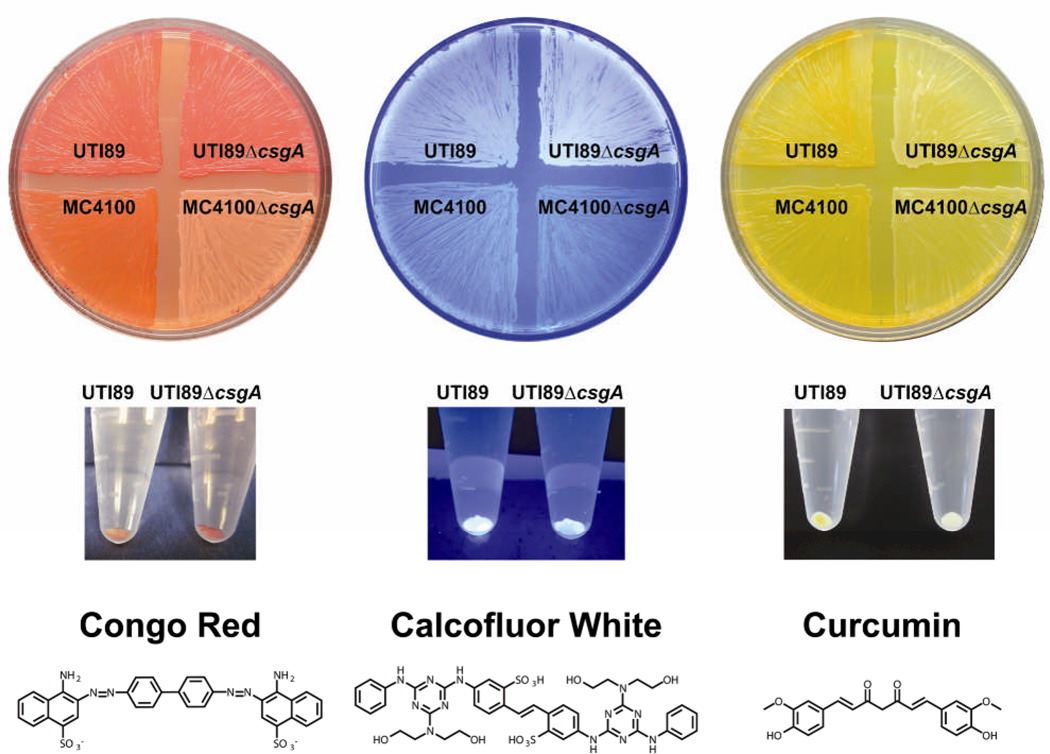Figure 1.
Dye binding to MC4100 and UTI89 wild-type and curli-mutant strains during growth on YESCA agar plates supplemented with the indicated molecules (top row) and after growth on YESCA agar without compound supplementation via a solution-based pull-down assay (middle row). CR binding is not curli specific in UTI89. Calcofluor-based fluorescence indicates the production of cellulose by UTI89 and UTI89ΔcsgA. Curcumin exhibits curli-specific binding in UTI89 even in the presence of cellulose.

